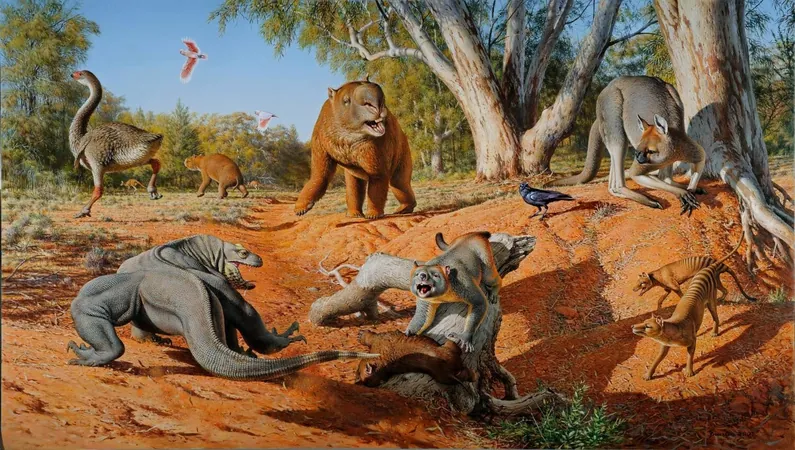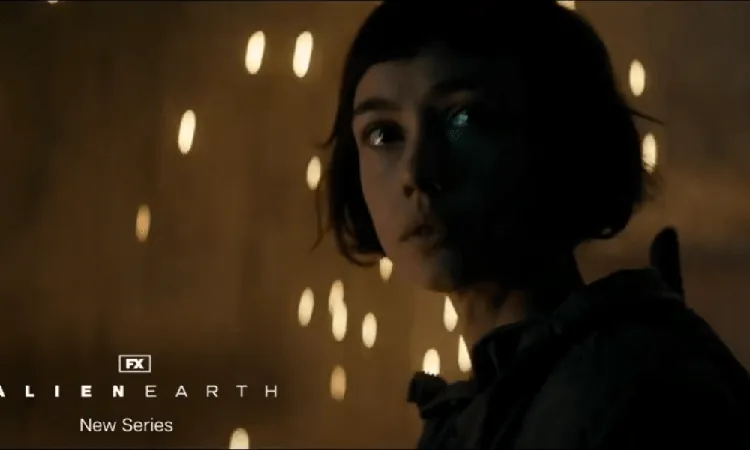
The Great Australian Megafauna Mystery: What Really Caused Their Extinction?
2024-11-19
Author: Noah
A long, long time ago, Australia was home to gigantic creatures that seem like they belong in a fantastical movie rather than our history. Imagine massive marsupials the size of small trucks, towering 2-meter 'thunder birds,' and fearsome 5-meter-long venomous lizards—these were the incredible megafauna that roamed the continent.
Australia's megafauna have been around for millions of years, but they reached their colossal sizes during the Pleistocene epoch, roughly 2.5 million years ago. Tragically, these magnificent animals disappeared between 60,000 and 20,000 years ago, and recent discoveries of hundreds of fossils are sparking renewed interest in this ancient cold case.
A Slow Demise: Dissecting the Theories
Researchers mostly agree on one thing: the extinction of these enormous beasts was not the result of a sudden catastrophe; it was a gradual decline, occurring over approximately 10,000 years. However, opinions diverge on what caused this slow demise.
There are three primary theories surrounding how these colossal animals went extinct:
1. Climate Change: Some scientists argue that environmental shifts dramatically altered the habitats, making survival difficult for the megafauna.
2. Human Hunting: Another perspective posits that the arrival of humans led to increased hunting pressure on these large animals.
3. Combination of Both: Increasingly, researchers believe both human activity and climate change played roles in hastening their extinction.
Dr. Aaron Camens, a paleontology lecturer at Flinders University with two decades of experience studying megafauna, argues that humans played a significant role in their decline. "If there were large, slow-moving sources of protein wandering around, humans would have inevitably hunted them," says Camens, suggesting that the arrival of humans disturbed an ecological balance critical to megafauna survival.
Climate and Extinction: A Complicated Relationship
Professor Anthony Dosseto, a geochemist, also acknowledges a dual influence in the extinction of megafauna. In his research, he dated fossils from South Walker Creek in Queensland, confirming their age between 34,000 and 40,000 years, aligning this timeframe with the last glacial period—the time when ice sheets were at their largest.
Despite the evidence of humans being present during the decline of megafauna, Dosseto emphasizes that climatic and environmental shifts cannot be overlooked. He asserts that we need to consider both elements as contributing factors, rather than mutually exclusive causes.
Fossil Records: The Key to Understanding
Dr. Kenny Travouillon, a curator at the Western Australian Museum, reinforces the notion of a multifaceted extinction scenario. While some megafauna species, like the horned turtle Ninjemys oweni, disappeared before humans reached the continent, others lived in parallel with early human populations.
Megafauna fossils found in Australia, some up to 100,000 years old, suggest these creatures faced their own challenges long before humans arrived. Travouillon explains that while drastic changes like droughts could decimate populations, humans' potential impact cannot be dismissed, especially for the 20 megafauna species that coexisted with early humans.
Unearthing the Evidence: The Need for Butchery Sites
Despite robust debates and various theories, a consensus among researchers is that until concrete evidence is found—specifically butchery sites that illustrate direct human interaction with megafauna—this mystery will remain unsolved.
"As of now, we have no evidence even hinting at humans butchering megafauna in Australia," Travouillon states. However, he remains hopeful that undiscovered sites may emerge in the future, shedding light on how humans may have contributed to the megafauna's fate.
Final Thoughts: The Ongoing Quest for Answers
As researchers continue to delve into this complex mystery, the question lingers: What really led to the extinction of Australia’s megafauna? With climate change and human impact both being legitimate contenders, it seems that history has many layers yet to be uncovered.
The megafauna extinction story is far from over, and the jury remains out. Quite possibly, this 40,000-year-old cold case will unlock new revelations as further fossils are found and new techniques are developed—perhaps leading to an understanding that connects our ecological past with our current challenges. Who knows? The next discovery could be just around the corner, waiting to rewrite history!









 Brasil (PT)
Brasil (PT)
 Canada (EN)
Canada (EN)
 Chile (ES)
Chile (ES)
 España (ES)
España (ES)
 France (FR)
France (FR)
 Hong Kong (EN)
Hong Kong (EN)
 Italia (IT)
Italia (IT)
 日本 (JA)
日本 (JA)
 Magyarország (HU)
Magyarország (HU)
 Norge (NO)
Norge (NO)
 Polska (PL)
Polska (PL)
 Schweiz (DE)
Schweiz (DE)
 Singapore (EN)
Singapore (EN)
 Sverige (SV)
Sverige (SV)
 Suomi (FI)
Suomi (FI)
 Türkiye (TR)
Türkiye (TR)